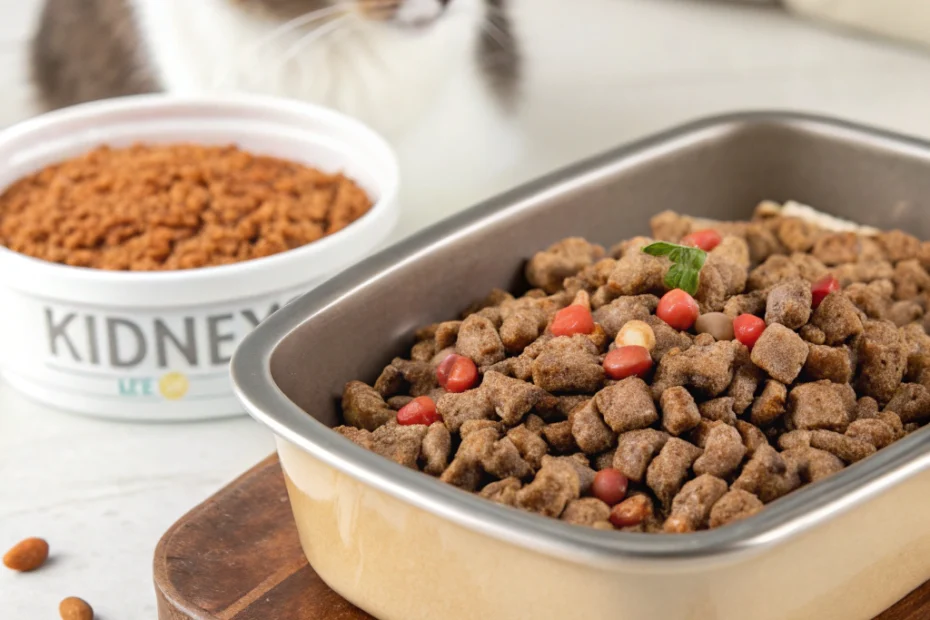At-a-Glance
Caring for a cat with kidney issues can be challenging, but understanding the role of cat kidney food may help you make informed decisions about your feline friend’s diet. Cat kidney food is specially formulated to support kidney function and is commonly used for cats with kidney concerns. This guide will walk you through the essentials of choosing, using, and understanding cat kidney food, along with tips on placement and environment, comparisons with alternatives, and answers to frequently asked questions.
How to Choose
When selecting cat kidney food, it’s important to consider several factors to ensure it meets your cat’s specific needs. Here are some key points to keep in mind:
- Consult Your Veterinarian: Before making any changes to your cat’s diet, consult with your veterinarian. They can provide guidance on whether cat kidney food is appropriate for your pet.
- Ingredient Quality: Look for high-quality ingredients that are gentle on the kidneys. Foods with reduced phosphorus and protein levels are often recommended.
- Nutritional Balance: Ensure the food provides a balanced diet with essential vitamins and minerals to support overall health.
- Palatability: Cats can be picky eaters, so choose a food that your cat finds tasty and appealing.
- Brand Reputation: Research the brand’s reputation and read reviews from other cat owners to ensure reliability and quality.
Safety & Setup
Introducing new food to your cat’s diet requires careful consideration to ensure safety and acceptance:
- Gradual Transition: Slowly introduce the new food by mixing it with your cat’s current diet over several days to prevent digestive upset.
- Monitor Health: Keep an eye on your cat’s health and behavior. If you notice any adverse reactions, consult your veterinarian immediately.
- Proper Storage: Store the food in a cool, dry place to maintain its freshness and nutritional value.
- Feeding Schedule: Establish a consistent feeding schedule to help your cat adjust to the new diet.
Core Pillars
Understanding the core pillars of cat kidney food can help you make informed decisions:
- Reduced Phosphorus: Lower phosphorus levels can help manage kidney workload and slow disease progression.
- Controlled Protein: Limiting protein intake may reduce kidney strain while still providing necessary nutrients.
- Omega-3 Fatty Acids: These may support kidney health and reduce inflammation.
- Antioxidants: Antioxidants can help combat oxidative stress and support overall health.
Placement & Environment Tips
Creating a comfortable feeding environment can encourage your cat to eat and enjoy their meals:
- Quiet Area: Place the food bowl in a quiet, low-traffic area to minimize stress and distractions.
- Separate Feeding Stations: If you have multiple pets, provide separate feeding stations to prevent competition and anxiety.
- Accessible Location: Ensure the food is easily accessible, especially for older cats or those with mobility issues.
- Fresh Water: Always provide fresh, clean water alongside meals to support hydration and kidney function.
Comparison with Alternatives
While cat kidney food is specifically formulated for kidney support, there are alternative options to consider:
- Homemade Diets: Some owners opt for homemade diets under veterinary guidance. These can be tailored to specific needs but require careful planning.
- Regular Cat Food: Regular cat food may not provide the same kidney support, but it can be suitable for cats without kidney issues.
- Supplements: Supplements may be used alongside regular diets to provide additional kidney support, but should be recommended by a veterinarian.
FAQs
Here are some common questions about cat kidney food:
What is cat kidney food?
Cat kidney food is specially formulated to support kidney health, often featuring reduced phosphorus and protein levels.
Can all cats eat kidney food?
Not all cats need kidney food. It’s typically recommended for cats with kidney concerns, and a veterinarian can provide specific advice.
How long should my cat stay on kidney food?
The duration depends on your cat’s health condition and should be determined by your veterinarian.
Are there any side effects?
Side effects are rare but can occur. Monitor your cat and consult your veterinarian if you notice any changes in behavior or health.
What to Do Next
After learning about cat kidney food, your next step is to consult with your veterinarian to discuss your cat’s specific needs. They can help you determine if cat kidney food is the right choice and guide you in selecting the best product. Remember, each cat is unique, and what works for one may not work for another. Stay informed and attentive to your cat’s health and well-being.
Disclaimer: Always consult your veterinarian for personalized advice regarding your cat’s health.
